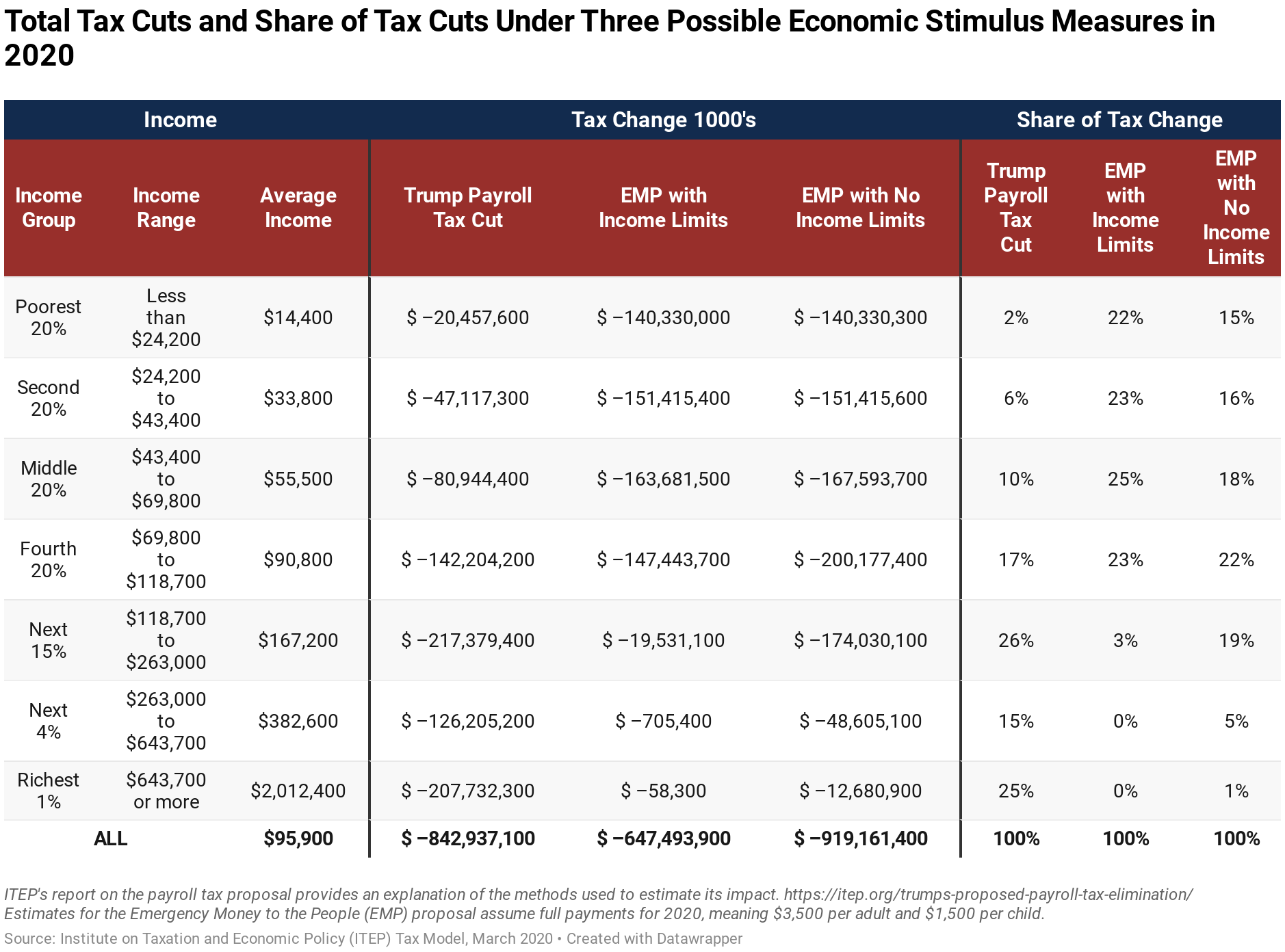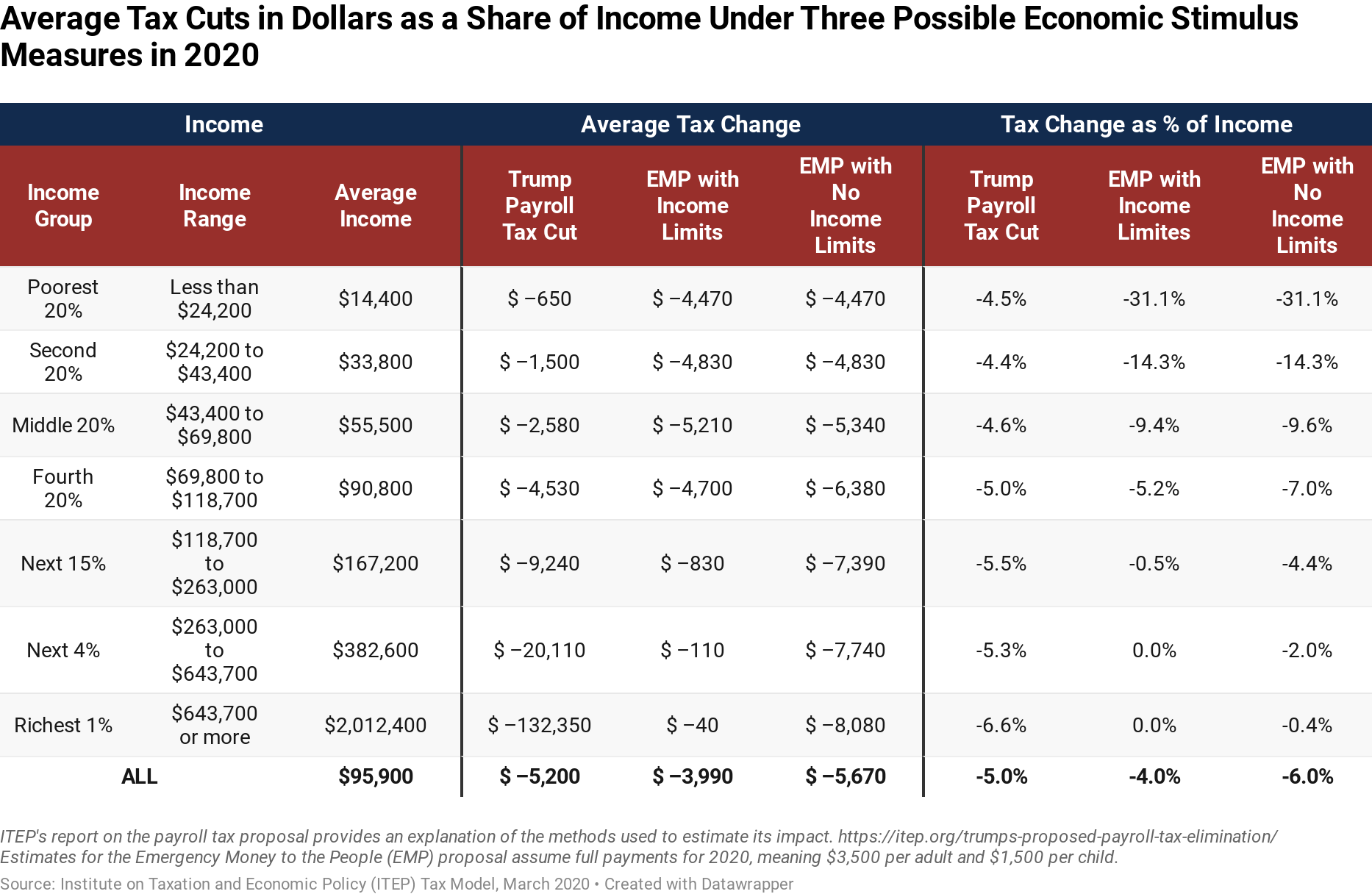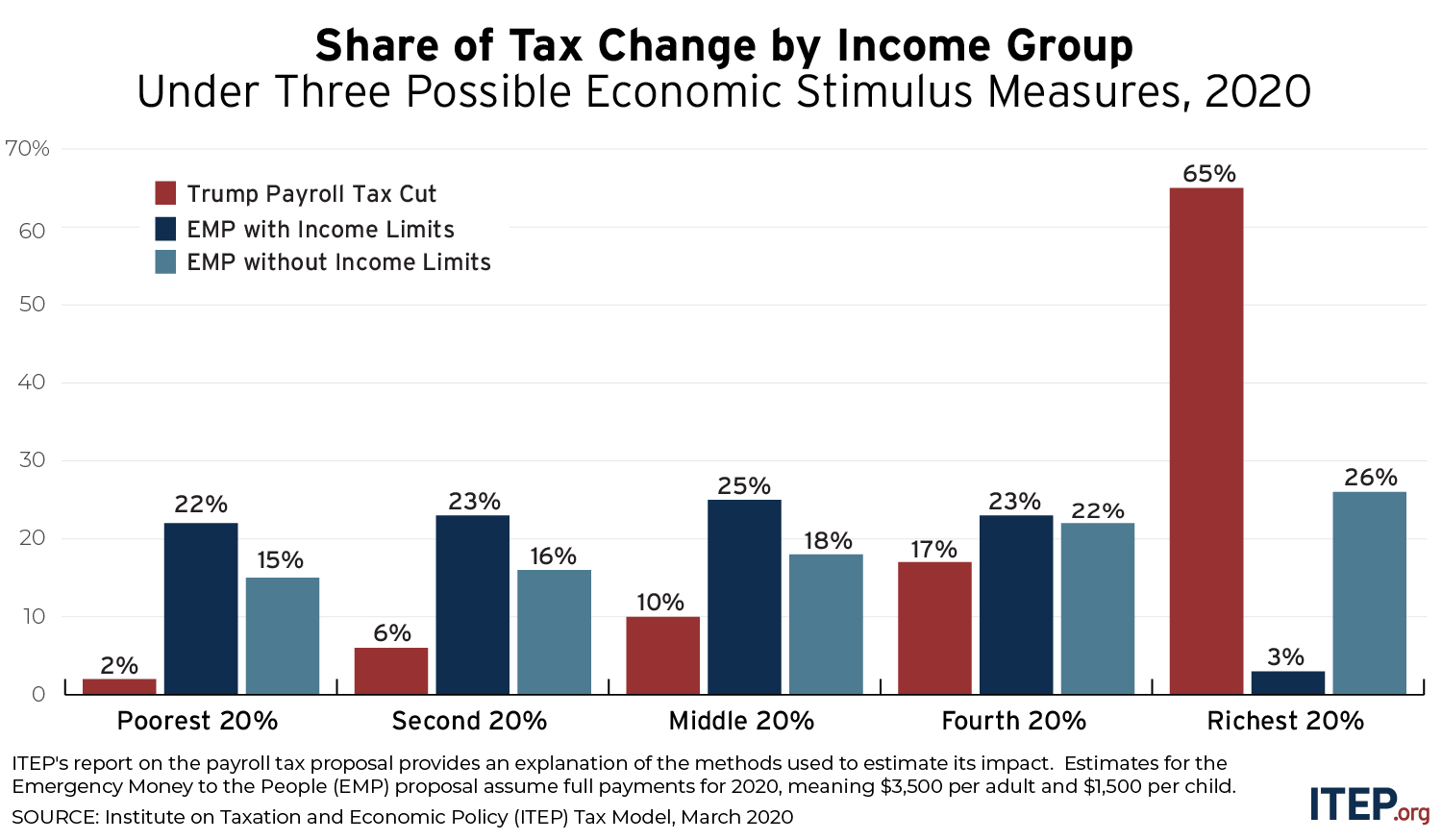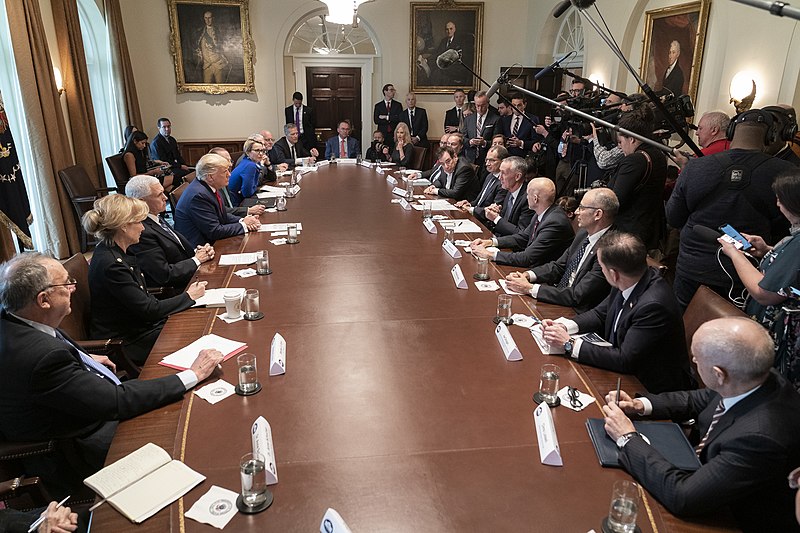Last week, we explained that President Trump’s proposal to eliminate payroll taxes for the rest of the year would cost $843 billion, and 65 percent of the benefits would go to the richest 20 percent of taxpayers. Several economists, advocates, and policymakers have suggested that the federal government simply send each household a check, either the same to all households or varied based on family size and income. In the face of widespread criticism, President Trump has since, just this afternoon, acknowledged that he probably needs to do something more immediate and also suggested support for sending checks to individuals and families.
A payroll tax cut would help those lucky enough to keep their job and would provide a bigger break to those with more earnings. Sending checks to every household would be a far more effective economic stimulus because it would immediately put money in the hands of everyone who would likely spend it right away, pumping it back into the economy.
For example, the Economic Security Project’s proposed Emergency Money to the People (EMP) would provide an initial payment of $2,000 for each adult and $1,000 for each child. If the unemployment rate exceeds a certain level, the government would send up to two additional payments of $750 for each adult and $250 for each child, for a maximum of $3,500 per adult and $1,500 per child in 2020.
The EMP proposal would phase out for married couples with income between $100,000 and $140,000 and for unmarried taxpayers with incomes between $60,000 and $80,000. Implementing the income limits may be complicated. Similar checks sent out during the Bush administration had income eligibility that was determined based on information reported on the previous year’s tax returns. But that approach may not work now because filing for the 2019 tax year is not complete and may be extended.
There may be ways around the logistical issues related to efficiently measuring household income. But even if the EMP proposal is modified to have no income limits at all, it would be preferable to the president’s payroll tax cut.
Table 1 below illustrates what would happen under three approaches: The president’s proposal to eliminate payroll taxes for the rest of the year, the EMP proposal with its income limit, and a version of the EMP proposal that would have no income limit.
President Trump’s payroll tax cut would cost nearly as much as the EMP proposal with no income limit ($843 billion vs. $919 billion). But under the payroll tax proposal, a quarter of the benefits would go to the richest 1 percent. (ITEP’s report on the payroll tax proposal explains why it is so poorly targeted to those in need.) Under the EMP proposal with no income limit, only 1 percent of the benefits would go to the richest 1 percent.
More importantly, either version of the EMP would give a much bigger boost to the bottom 60 percent of taxpayers, those most likely to immediately spend any new money they receive, providing a kickstart to the economy if it begins to sputter.
Table 2 above illustrates that the average benefit from either version of the EMP proposal would be more than $4,000, even for those among the poorest 20 percent. For households in this group, the benefit would expand their income by more than 30 percent, ensuring increased consumer demand that will provide customers to struggling businesses.
There are variations on the idea that the federal government should simply send checks to households and they continue rolling out by the hour. We will keep an eye on them and update as we can (for example, Senators Brown, Bennet and Booker are working on a plan). For now, we’ll say that all of them would be a more effective response to the current situation than the president’s payroll tax proposal.








